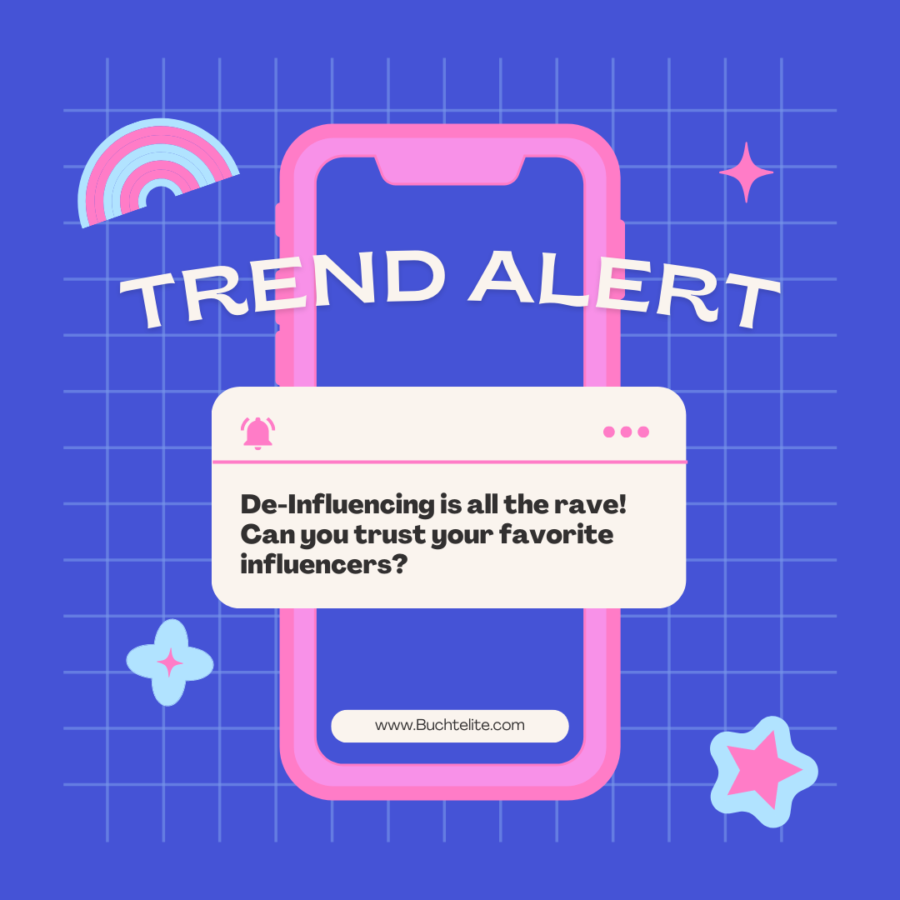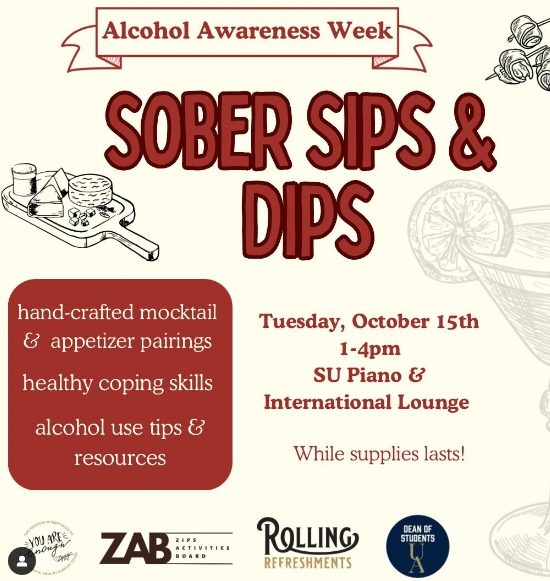De-Influencing has Taken over TikTok, What Will Become of Influencer Marketing?
The de-influencing hashtag on the social media site has over 200 million views and counting as influencer marketing seems to shift.
Trend alert graphic features mobile phone and title of the story. (Created using Canva.com design program.)
March 2, 2023
At the beginning of the year, various TikTok users started sharing videos of products that were not “worth the hype” or were not worth spending money on.
This trend started on an incline when TikTok user Mikayla Nogueira posted a paid partnership with L’Oréal Paris, advertising their new Telescopic Lift mascara. In this video, it was alleged that she had applied false eyelashes for the “after” effect.
This started a slew of videos with users noting that the trust between influencers and their audiences is nearly gone.
Dr. Rhiannon Kallis of The University of Akron’s School of Communication stated that viewers on social media are growing suspicious of video editing, filters, after-effects , and more.
“Influencers may need to be even more transparent in terms of how they walk viewers through their product demonstration. For example, they may need to specifically state no false lashes were applied or have it somewhere explicitly in their description,” says Kallis.
That is not the only reason de-influencing is coming to trend, though. With the current economic status, people are finding they must really watch what they spend on the luxuries that these influencers try to push.
Suddenly, $500 hair dryers, hundreds of dollars’ worth of skincare, and $40 water bottles are unimportant to people. Raised rent and inflation on groceries take the cake on the importance of where paychecks are going.
This does not mean influencer marketing is out the window, though. “I don’t think there will be significant changes in the amount of influencer marketing regardless of the economy,” says Kallis. “Companies are still going to want to partner with those who have a connection to specific audiences, and influencers are going to take the deals.”
Though people may not completely stop spending money on wants because everyone needs to treat themselves occasionally, these influencers’ audiences are starting to feel a sense of contempt for the idea of PR packages and freebies to those who don’t need them.
This has never been a new thing. From celebrities to YouTubers, free packages in exchange for advertisements have always been an excellent way to market for companies.
People are starting to speak out about it a bit more after the turmoil influencers are currently going through and the number of influencers that are recently coming up on social sites like TikTok, Instagram and Pinterest.
Kallis thinks, “The magnitude of current influencer marketing makes viewers really think about these things and express their attitudes. I think people have had this attitude towards celebrities, and it is no different that now they are applying them to influencers as well – it may have just taken a bit longer to make that connection and realization.”
However, it looks like no matter what happens, influencer marketing is still ongoing. How do we move on from the spreading of false truths?
We can take several measures when looking for an influencer to trust. Kallis says the most effective influencers are consistent in their promotion categories. An influencer who recommends restaurants, lipstick, stain remover and cars would be less trusted than one specializing in one variety, such as cosmetics.
“I would be more wary of influencers who promote a wide variety of products because they may be more impacted by the money versus actually having knowledge and a stake in the product use,” Kallis continues.
In the end, it is up to you who you believe in when it comes to recommendations and advertisements. If you find influencer marketing to be misleading and biased, general reviews would be best in your favor to read before you spend money on something someone is pushing.













